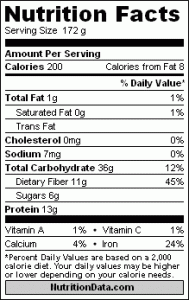Have you got your first cold of the season yet? Our family has cycled through an entire round already – each of us taking turns coping with runny noses, hacking coughs and sore throats.
While typically not a life-threatening illness, the common cold is one of the most widespread diseases in the world and a leading cause of doctor visits and absenteeism from school and work. Beyond that, having a cold is just plain uncomfortable. So of course, I was on the hunt a treatment that actually works.
I immediately turned to the Cochrane Collaboration, which has published dozens of reports on preventing and treating the common cold. Here are a few that interested me most;
- The data on heated, humidified air is completely split. The Cochrane Collabortion review, which included six trials with a total of 387 participants, found that in some studies inhaling steam helped symptom and in others it did not.
- I’ve long increased my orange juice intake when I have a cold with hopes that the extra Vitamin C would help. But a systematic review found no consistent effect on the duration or severity of cold symptoms.
- A review of seven trials found that over-the-counter nasal decongestants like Sudafed do help, but only slightly. Users reported a 6 percent improvement in symptoms after one dose, and a 4 percent improvement over several days. For me, personally, I wonder if such a small improvement is worthwhile.
- The most promising treatment for the common cold, according to the evidence, is zinc. The systematic review of 15 randomized controlled trials found that zinc lozenges and syrup are both effective in reducing the duration and severity of the common cold in healthy people, when taken within 24 hours of onset of symptoms.
Needless to say, my medicine cabinet is now stocked with zinc lozenges so that our family is ready for any other colds that come our way this season.







